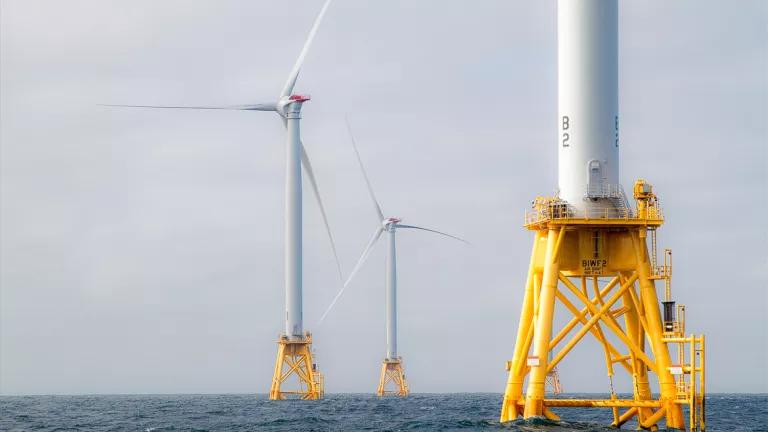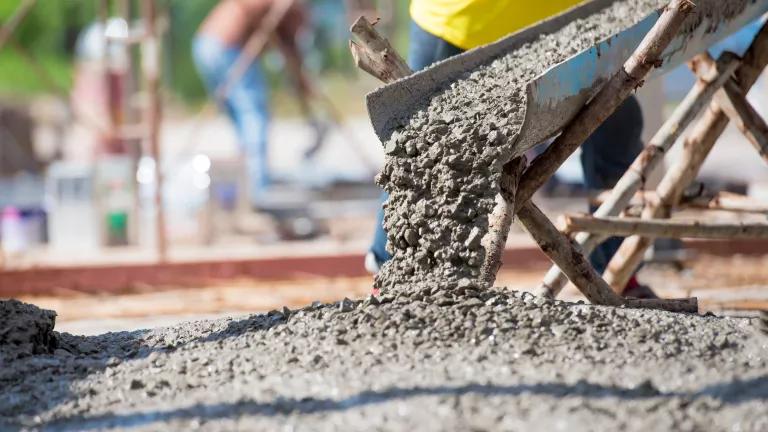2021 Saw Real Momentum for Clean Materials Procurement
The Biden administration, Congress, and leading states are all taking action to leverage the government’s purchasing power to help decarbonize these important industrial sectors.

This year we’ve seen a groundswell of attention on public procurement and its role in growing early markets for low carbon industrial building materials—products like concrete, cement, and steel that are highly carbon-intensive to manufacture, yet foundational to modern life and our built environment and have few, if any, viable substitutes. The Biden Administration, Congress, and leading states are all taking action to leverage the government’s purchasing power to help decarbonize these important industrial sectors.
Under business as usual, heavy industry is on track to become the largest source of U.S. GHG emissions within the decade. Upgrading U.S. factories so that American manufacturers can produce the cleanest building materials on the market must be part of our climate agenda. A recent report from the IEA, Net Zero by 2050, estimates that global demand for clean energy and sustainable infrastructure materials will reach $5 trillion per year by 2030. Because industrial decarbonization is being driven by technologies that exist today, we can invest now to cut emissions at our factories and help them make the low carbon industrial products the U.S. and the world will increasingly rely on.
Administration
Recognizing both the challenge and opportunity, President Biden signed an Executive Order on federal sustainability that includes a federal Buy Clean program, alongside other exciting commitments, such as purchasing 100% carbon-free electricity by 2030, moving to all zero-emission vehicle acquisitions for the federal fleet by 2035, and committing to net-zero emissions in federal buildings by 2045. Under the Order, a Buy Clean Task Force will identify and prioritize pollutants and materials, such as concrete and steel, to be covered under a Buy Clean policy, and provide recommendations across three key areas: 1) how to collect critical data on the lifecycle greenhouse gas (GHG) emissions associated with producing construction materials to increase transparency of embodied emissions; 2) grants, loans, technical assistance, or other ways to directly invest in and support domestic manufacturers in reporting and reducing their emissions; and 3) pilot programs that incentivize federal procurement of construction materials with lower embodied emissions.
Further demonstrating its commitment to using its scale and purchasing power to help achieve U.S. climate goals, the Biden Administration is taking public comment on ways it can amend the Federal Acquisition Regulation to minimize the risk of climate change, including best practices for measuring the lifecycle emissions of products and enabling procurement officials to integrate climate impact as a purchasing criterion alongside cost and technical merit when selecting winning bids for government contracts.
Congress and leading states are also moving in this direction.
Congress
The first step in any clean procurement effort is getting high-quality data. The House-passed Build Back Better Act included $250 million in grants to enable manufacturers of construction materials to disclose the embodied carbon of their products via a best-practice tool called an Environmental Product Declaration (EPD), commonly used by the private and public sectors to inform sustainable building efforts. It also includes roughly $6.5 billion in funding over ten years for low carbon materials procurement pilots with the goal of increasing penetration of cleaner materials in federally funded construction projects. The programs would be housed at agencies that are major buyers of these materials, including the General Services Administration (GSA) and the Department of Transportation’s Federal Highway Administration (FHWA).
Robust funding for procurement pilots paired with grants to improve data on embodied carbon emissions in widely used construction materials like concrete and steel could offer big GHG savings, as we and our partners discuss here. It's critical that this funding remains in the bill as it moves through Congress and that the Senate makes an equivalent investment.
Besides action in Congress, there has also been substantial progress toward passing model public procurement laws to drive the decarbonization of concrete in states like California, New York, and New Jersey.
States
In California, NRDC is sponsoring legislation to add concrete to California’s existing Buy Clean program; establish more rigorous requirements on EPDs; require the state to use performance-based specifications in procuring concrete to unlock innovation in low carbon concrete mix design; and add a performance bonus to incentivize contractors to procure ultra-low carbon concrete in state public works projects.
In New York, the Low Embodied Carbon Concrete Leadership Act (LECCLA), passed both houses of the state legislature in June 2021 and awaits the Governor’s signature, setting the stage for a robust state procurement policy on low carbon concrete. But in the meantime, the state Office of General Services has already advanced a draft Lower Carbon Concrete specification, with the aim of approving it by Earth Day, in April of next year. While this parallel development may pre-empt the need to implement the LECCLA bill that passed last June, it provides a key policy that new successor legislation -- proposed and supported by NRDC for the 2022 session -- can directly supplement, incorporating updated elements of the original LECCLA bill that were stripped from the final version. These include incentives tied directly to embodied GHG emissions; performance-based specification standards; and expedited low carbon material evaluation by the NY Department of Transportation.
And New Jersey is now on the brink of passing its own version of LECCLA, which will require the state to create a low carbon concrete specification and offer performance bonuses to concrete suppliers that deliver concrete with lower embodied emissions. Concrete suppliers that use breakthrough carbon utilization technologies to deliver deeper cuts in embodied emissions, such as those I discussed here, will be eligible for additional bonus.
Retooling and innovating to decarbonize products and processes inside American factories is key to our national climate goals. If the federal government and large state governments flex their procurement muscle to bring more low carbon concrete, steel, and other widely used materials to market at scale, it has the potential to translate to big emissions savings and grow the U.S. clean economy.
In the new year, we hope to see this enthusiasm for smart procurement policies continue, including more state efforts to replicate model policies. The federal government also has a critical role to play in setting standards for EPDs to ensure we are generating accurate, verifiable, and comparable data on the embodied emissions of widely used construction materials. This will help ensure that low carbon materials suppliers can participate across the board, rather than face a patchwork of different requirements across states and federal agencies. It will also build a sound foundation for a Buy Clean program that ultimately leverages the full purchasing power of the federal government.


